We explore the life and work of Vincent van Gogh, and explain why he is regarded as one of the foremost exponents of Post-Impressionism.
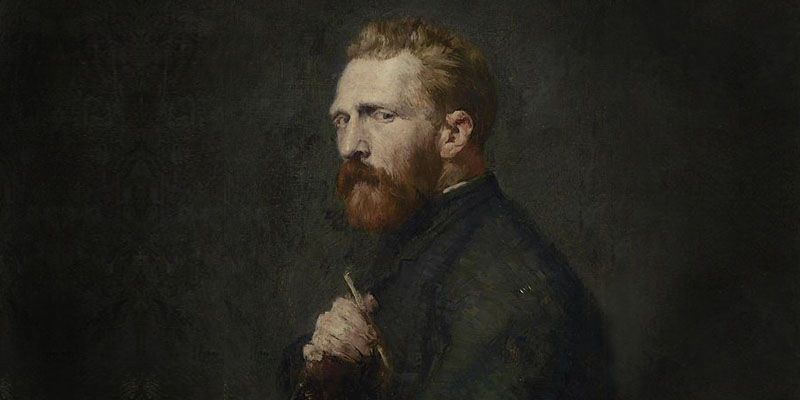
Who was Vincent van Gogh?
Vincent van Gogh was a Dutch painter regarded as one of the greatest masters in the history of painting and a major exponent of Post-Impressionism. His body of work, comprising over 800 paintings and 1,600 drawings, had a profound influence on later art movements, especially on German Expressionism and Fauvism.
Throughout much of his life, Van Gogh suffered from mental illness, probably bipolar disorder or epilepsy, or other illness arising from a health problem like syphilis, according to some authors, or kidney ailments, according to others. This eventually led him to self-harm and death.
Despite his tormented life, he had the love of his brother Theo, to whom he wrote around 650 letters which are preserved today, and the occasional company of Clasina Maria Hoornik, “Sien”, a prostitute who often posed for his paintings. At the age of 37, Van Gogh suffered a sudden death from a gunshot wound. Whether it was suicide or manslaughter still remains unknown. Over time, Van Gogh’s artistic stature has established him as the quintessential icon of the tortured artist in the history of Western art.
- See also: Frida Kahlo
Birth and early life of Vincent van Gogh
Vincent Willem van Gogh was born in Zundert, a small town in the Dutch region of Brabant, on March 30, 1853. He was the first of six children born to Theodorus van Gogh, a humble Protestant minister, and his wife Anna Cornelia Carbentus. The other five children of the Van Gogh family were Theo, Cornelius, Elisabetta, Anna, and Wilhelmina.
Vincent was a reserved and temperamental child, fond of observing nature which he later reproduced in his drawings. His childhood was austere and religious, or as Vincent himself described it: "sad, cold, and sterile".
His education was similarly erratic, alternating between rural school, governesses, and boarding schools. The first was in Zevenbergen, Moerdijk, where he learned French and German; another in Tilburg, where he stayed until the age of fifteen, when he decided to abandon his studies.
At sixteen, Vincent took his first job at Goupil & Cie, an art dealer and print publishing firm located in The Hague, of which one of his uncles was a partner.
There, he became acquainted with the works of the great masters of Dutch painting: Rembrandt (1606-1669) and Frans Hals (1581-1666), and particularly French Jean-François Millet (1814-1875) and Jean-Baptiste Camille Corot (1796-1875), whose work would inspire him throughout his life.
This job allowed him to travel frequently. Around 1874, he was transferred to London, and in 1875, he was sent to Paris, where he had the opportunity of visiting numerous art galleries.
In the years that ensued, however, Vincent devoted himself to other occupations: he was a bookseller, language teacher and, above all, a lay preacher. His desire to serve humanity led him to consider pursuing a theological career in Amsterdam, but eventually he chose to preach the gospel in Brussels and later in the mining town of Borinage.
At the age of 23, while in Borinage, he experienced the hardships of poverty first hand, and underwent his first major spiritual crisis when in 1879 his superiors informed him of the end of his mission on the grounds that he interpreted the gospel message too literally or, as Van Gogh himself put it, as "a true Christian".
Lonely, lost, and bankrupt, Vincent then turned to drawing, aided by the money his brother Theo sent him monthly. It was thus that in 1880 he discovered his true vocation: art.
Van Gogh's artistic training
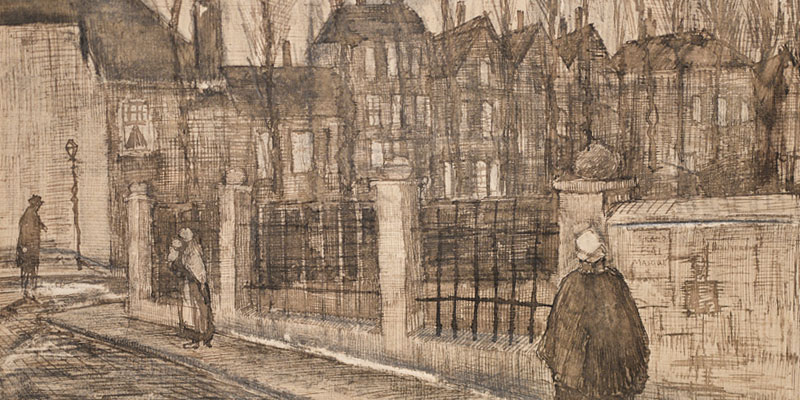
Despite his preeminence in the history of Western art, Van Gogh's artistic career was extremely brief: his active years only spanned the period from 1880 to 1890. During the first four years, Vincent devoted himself to cultivating his artistic skills, which until then had been largely self-taught.
During his stay in Brussels in 1880, his early compositions consisted almost exclusively of drawings and watercolors portraying workers, peasants, and fishermen, in the style of his admired Millet. Shortly after, he befriended Dutch painter Anthon van Rappard (1858-1892) and enrolled at the Academy of Fine Arts to improve his drawing technique.
In 1881, Vincent returned to his hometown and settled in his father's parsonage, devoting himself entirely to drawing nature. Although he worked methodically, results were limited. It soon became evident that he would require further artistic training.
In April that year, Vincent met Cornelia Adriana Vos-Stricker, one of his cousins, and fell in love. The woman, recently widowed, categorically rejected Vincent's marriage proposal, who insisted through letters as his beloved refused to receive him. This obsessive attitude became a source of quarrels between Vincent and his father.
Finally, in 1881, Vincent decided to return to The Hague, where he was met by his cousin Anton Mauve, a watercolor painter. There, he visited new museums, became acquainted with other painters, and experimented with oil painting for the first time.
In January 1882, while in The Hague, Vincent met his model, Clasina Maria Hoornik, nicknamed "Sien", a pregnant prostitute with a little daughter. Moved by the helplessness of her state, the painter offered her shelter in exchange for posing for him.
From this sudden association arose, among other works, Sorrow, a 1882 drawing portraying Sien's naked body in a posture of utter helplessness, which today is considered a masterpiece of drawing. After Sien's baby was born, Vincent took her to an apartment with a studio, where they lived together until 1883.
That year, Sien started drinking and returned to prostitution, prompting Vincent to leave her. Eager to go back to nature and rural life, in September 1883 he left for Drenthe, in the northern Netherlands, leaving Sien behind. In 1904, she committed suicide by throwing herself into the Scheldt River in Rotterdam.
Van Gogh's Paris period
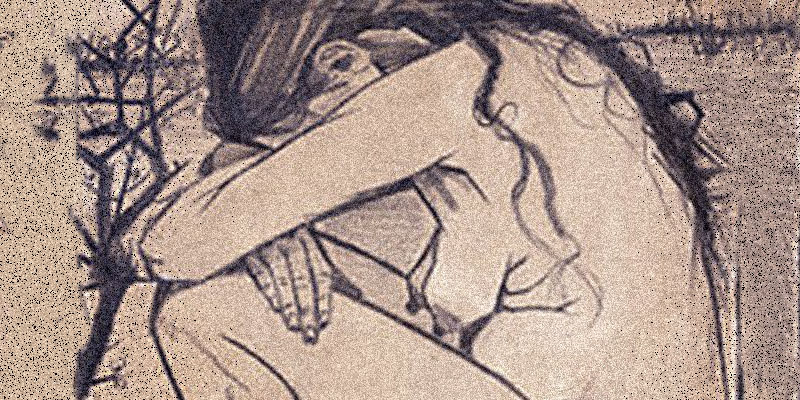
Vincent spent three months in Drenthe before returning to Brabant to a small village called Nuenen. Between 1884 and 1885, he drew and painted still lifes, landscapes, and scenes of rural life. His reading of French novelist Émile Zola (1840-1902) influenced the works he produced there, among which The Potato Eaters (1885) stands out, first sketched in pencil and then in oil.
While in Nuenen, Vincent fell in love once again, this time with a neighbor named Margot Begemann, who he could not marry due to the opposition of her parents. In 1885, he learned of the death of his father, and subsequent family disputes over the inheritance led the painter to turn his back on his family and take refuge in the sacristy of a Catholic church.
The Potato Eaters represents a major breakthrough in Van Gogh's career, who until then had painted single-figure compositions. Aware of this and proud of the result, Van Gogh had, with Theo's help, twenty lithographs of the work printed for sale. Today, only eight have been recovered, which are exhibited in the Van Gogh Museum.
Thanks to the study of the works of Paolo Veronese (1528-1588), Eugène Delacroix (1798-1863), and Pieter Paul Rubens (1577-1640), Van Gogh's understanding of painting notably broadened. In fact, his admiration for Rubens prompted his sudden departure for Antwerp, where most of his works were to be found.
It was during his stay in Antwerp that he discovered Japanese woodcuts and the Impressionist palette, which he found much more interesting than the teachings at the Antwerp Academy. This, added to the harshness of his character, put him at odds with his teachers, and after three months of study he left the academy, moving back to Paris where he was received by his brother Theo, a well-known art dealer.
Living together was not easy for Vincent and Theo. Vincent was stubborn and temperamental, and it was always Theo who had to give in. Even so, they settled down in Montmartre, where Vincent was able to mingle with the great painters of the time, such as Émile Bernard (1868-1941), Henri de Toulouse-Lautrec (1864-1901), Jacob Camille Pissarro (1830-1903), and Paul Cézanne (1839-1906).
During this period, and thanks to his exchange with these and other artists, Van Gogh developed a much more colorful style of greater psychological depth. An example of this is the portrait Agostina Segatori Sitting in the Café du Tambourin, from 1887. The same is true of the portraits he painted of Julien Tanguy, considered characteristic of Van Gogh's Paris period.
The years in Paris were remarkably fruitful for Van Gogh, though continuous work and absinthe consumption kept him in a state of permanent mental fatigue. His Post-impressionist style fully matured during this period, until, in early 1888, he set out to find the ideal light for his exploration of color, which pushed him to seek new horizons. He thought of going to Italy, but ended up heading for Arles, in the south of France.
The stay in Arles
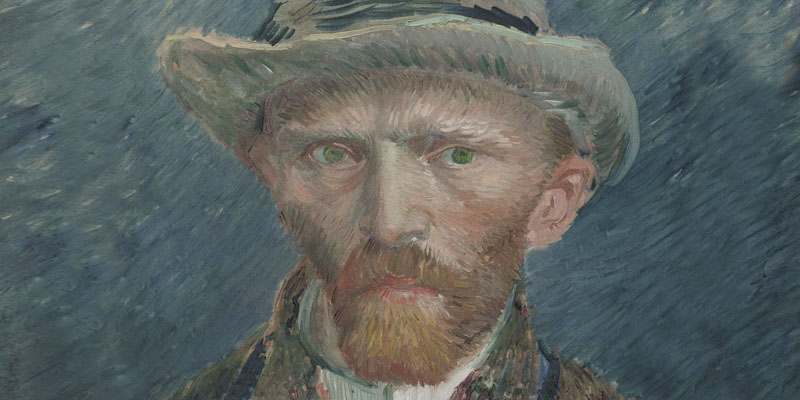
Exhausted by city life, Van Gogh arrived in Arles in February 1888. His paintings from this period reflect his enthusiasm for returning to nature and the peaceful life of a small town: flowers, views of the village and its surroundings, portraits of the postmaster, interior and exterior views of his house.
This period saw the creation of works like Coal Barges, Peach Trees in Blossom, and Portrait of Joseph Roulin, in which Van Gogh's style became much more instinctive and bold, far from the traditional styles he had struggled so hard to master. In a letter to his brother Theo, he mocks those who say that a painting has been painted too quickly: “You can tell them they have looked too quickly”.
While in Arles, Van Gogh began painting his famous sunflowers, a frequent and iconic theme in his works. The intensity of the yellow color would be a constant feature in the compositions during this period: Vase with Twelve Sunflowers (1888), Sunflowers (1888), Les Alyscamps (1888), and Wheatfield with Crows (1890) are good examples of this.
Van Gogh rented and decorated a house in Arles (the "yellow house"), intending to invite other painters he considered close to his style, like Paul Gauguin (1848-1903) and Toulouse-Lautrec, to form a separate Impressionist artistic group which he named "The Studio of the South". In October 1888, Gauguin accepted his proposal.
Van Gogh and Gauguin spent two months painting and exchanging ideas, even portraying each other, before their relationship turned sour. Their personalities were incompatible, and their creative projects could not align. On Christmas Eve, things reached a breaking point: Van Gogh threatened his companion with a razor. The situation did not get out of hand, but that same night, Van Gogh mutilated a good portion of his own left ear.
The ear-cutting incident is one of the most well-known and debated subjects in Van Gogh's biography. According to Gauguin's account, Van Gogh mutilated himself and, after bandaging his head, wrapped the ear in a cloth and took it to an Arlesian prostitute he frequented, as a gift.
Other versions affirm that Gauguin, being a master of fencing, injured Van Gogh in the ear with his saber during the fight, and then Vincent would have cut it off completely. Still, others hold that Van Gogh would have done it in a fit of rage upon learning of his brother's marriage.
Whatever the case, what we do know is that the police arrived at the "yellow house" the next day finding Van Gogh lying unconscious in his bed. The painter had no recollection of what had happened. The authorities notified Theo and confined Vincent to the Hôtel-Dieu Hospital in Arles. Gauguin, in turn, rushed to Paris and virtually had no further contact with Van Gogh.
Back home, he painted among other works his famous Self-Portrait with Bandaged Ear (1889), of which there are two versions, one with and the other without a pipe. In April 1889, he had to be admitted to the hospital again due to symptoms of paranoia and mania. Fearing he would lose his ability to paint, Vincent requested to enter the psychiatric hospital in Saint-Rémy-de-Provence, where he could work under medical supervision.
Van Gogh’s final years
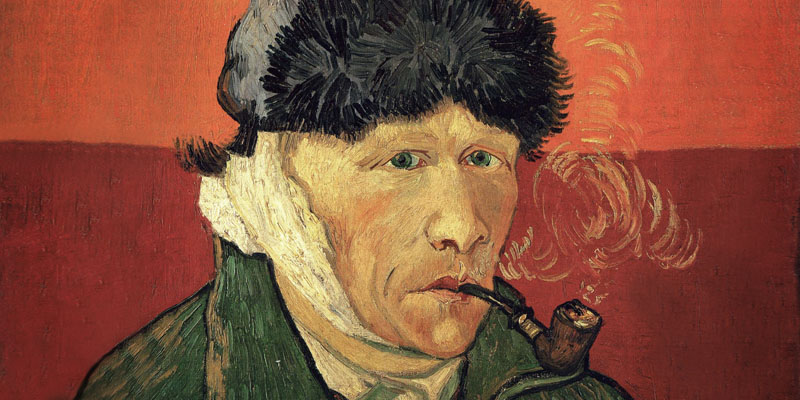
Van Gogh's final years were marked by mental illness. Nevertheless, they were also the most prolific, painting some of his most famous works, such as The Starry Night (1889), Irises (1889), Almond Blossom (1890), and Wheatfield with Crows (1890).
During the twelve months he was confined in the psychiatric asylum, Van Gogh painted self-portraits, portraits of his doctors, and made versions of famous paintings by Delacroix, Rembrandt and Millet, often with biblical motifs. He never stopped working, except during periods when paranoia and delusion prevented him.
In 1889, concurrently with the 1889 Paris Exposition, the Salon des Indépendants was announced, the first exhibition to which Van Gogh was invited to participate. Through his brother Theo, he presented two paintings: The Starry Night and Irises.
Another invitation came in January 1890, to exhibit along with Les XX, to whom he sent six works, including his Sunflowers. At the 1890 Salon des Indépendants, he exhibited ten works. But while his paintings triumphed, Vincent suffered new collapses: anguish and panic episodes, hallucinations, and intense fits of rage.
When things seemed to improve, he decided to leave the clinic. He briefly visited Theo in Paris and then settled in Auvers-sur-Oise, a town near the French capital. There, he rented a room at the Auberge Ravoux and befriended physician Paul Gachet, who took care of him in the following months.
In Auvers-sur-Oise, Van Gogh painted at a frenetic pace, completing around 500 works between February and July 1890. The rural landscape seemed to provide him some spiritual relief, despite being weighed down by his financial dependence on Theo, who had married and had a child, and his weariness of Gachet's care.
On July 27, 1890, Vincent went for a walk in the countryside. Amidst the wheat fields, he shot himself in the chest with a revolver he had stolen from his host. After two days of agony, he died in his bed, leaving a final letter for Theo in which he said "I risk my life for my own work and my reason has half foundered in it". He was 37 years old. His body was buried at Auvers-sur-Oise Cemetery.
Six months later, Theo died at a hospital in Utrecht. In 1914, his body was exhumed and reburied in his final resting place next to his beloved brother Vincent.
The Work of Van Gogh
Van Gogh's artistic oeuvre is exceptionally vast and diverse, consisting of about 900 paintings and 1,600 drawings within a creative span of just 10 years. His artistic career encompasses several distinct periods:
- Traditional period: While in the Netherlands, between 1880 and 1886. This period followed the tradition of Dutch folk painting, characterized by earthy colors and rural life motifs, despite being strongly influenced by French painters Corot and Millet.
- Impressionist period: While in Paris, between 1886 and 1887. This period reflects his artistic transition and the influence of the Impressionist movement, which sought to break with the academicism of European painting at the time. During this period Van Gogh became greatly influenced by Japanese art, developed a new conception of light and color, and simplified his figures, his compositions becoming bolder.
- Post-Impressionist period: While in Arles and Auvers-sur-Oise, between 1887 and 1890. During this period, Van Gogh’s art reached its height, attaining its greatest intensity and uniqueness: his frantic technique, the predominance of yellow, his interest in everyday scenes. This period is considered close to Expressionism and Fauvism, two art movements strongly influenced by Van Gogh.
Van Gogh never came to witness the place his painting would occupy in Western and world art. During his lifetime, his works were only exhibited during his final years, and although they were very successful, the artist's mental state was already weak. His stature as an artist has established him as a central figure in the history of art, his legacy being celebrated and honored in the Van Gogh Museum in Amsterdam as well as in museums all over the world.
His extensive correspondence with Theo has also been edited and translated into numerous languages.
Among Van Gogh's most renowned works are:
- The Potato Eaters (1885)
- Skull of a Skeleton with Burning Cigarette (1885)
- Bedroom in Arles (1888)
- Vase with Twelve Sunflowers (1888)
- Self-Portrait with Bandaged Ear (1889)
- The Starry Night (1889)
- Irises (1889)
- Wheatfield with Crows (1890)
References
- Galería van Gogh. (s. f.). Vincent van Gogh: Biografía. https://www.vangoghgallery.com/
- Hernández Rodríguez, J. A. (2019). “Van Gogh: los años del Borinage”. Revista Praxis. https://praxisrevista.com/
- Museo Nacional de Thyssen-Bornemisza. (s. f.). Vincent van Gogh. https://www.museothyssen.org/
- The Encyclopaedia Britannica. (2023). “Vincent van Gogh (Dutch painter)”. https://www.britannica.com/
- Van Gogh, V. (2023). Cartas a Theo. Trad. Víctor Goldstein. Adriana Hidalgo Editora.
- Van Gogh-Bonger, J. (2018). A Memoir of Vincent van Gogh. The J Paul Getty Museum Publications.
Explore next:
Was this information useful to you?
Yes NoThank you for visiting us :)